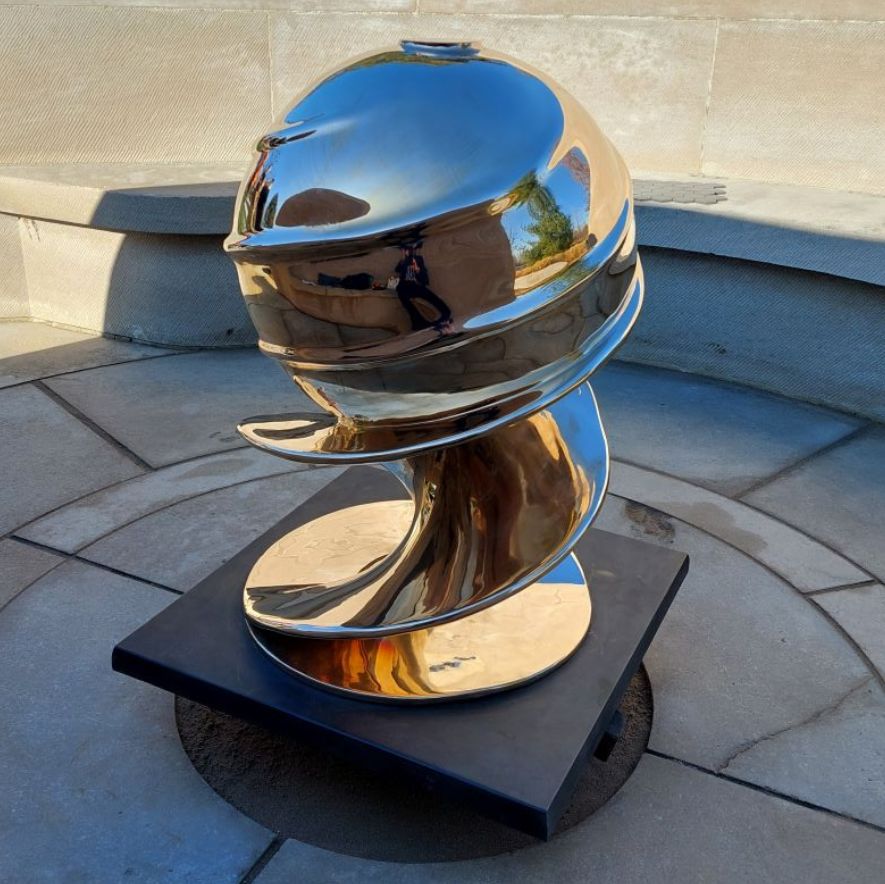
This dramatic polished bronze sculpture is called ‘Sunflame’.
Designed by renowned architect Douglas Cardinal, it was crafted in metal by at the workshops of Research Casting International in Nepean.
In the autumn of 2024, it became the centrepiece of the First Nations Peace Monument at DeCew House Heritage Park in Thorold.
Early concepts
Like many of Douglas Cardinal’s projects, the completion of the First Nations Peace Monument was not a simple process. As a visionary who has constantly challenged the boundaries of design, materials, and architectural form throughout his career, Cardinal proposed a series of evolving concepts to make up the central sculptural element in the First Nations Peace Monument. These ranged from a simple, internally lit alabaster sphere (which appeared on the initial renderings), through a tempered glass globe, to an open metallic lattice design – all of which proposed structural, manufacturing, or durability challenges.
Throughout the process, Douglas sought to retain both his signature curvilinear organic design vocabulary, and to express the warmth and light that emanates from both the hearths of longhouses and from the sun. The final design was, in a sense, the most unfettered expression of his artistic vision, since 3D computer design technology allowed him to envision, refine, and render a complex and flowing organic shape that would challenge conventional sculptural techniques. The final computer shapefile was used to print a life-sized 3D polymer version of the work which was used as a casting master for the final bronze sculpture.
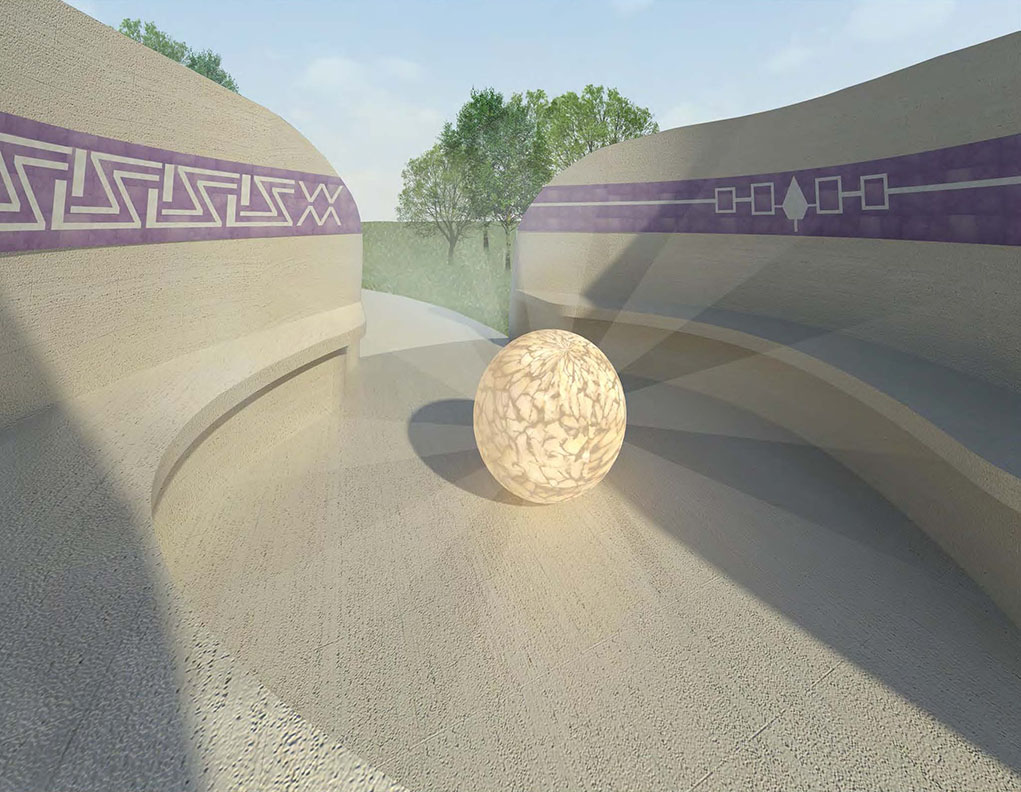
Early alabaster sphere concept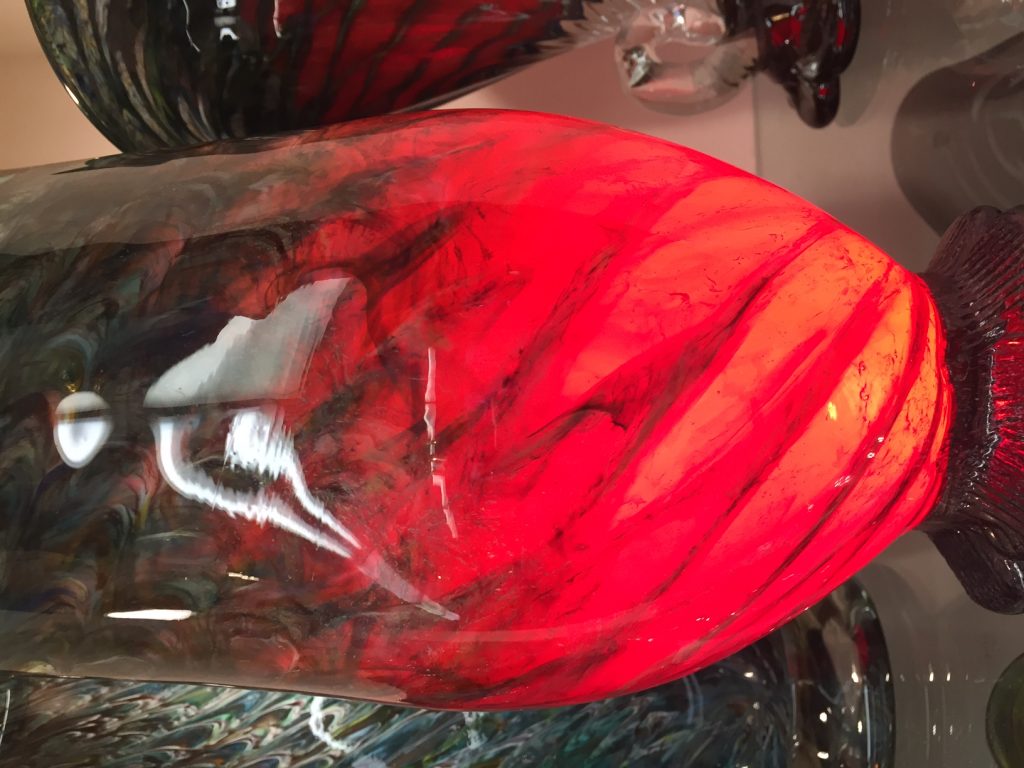
Solid tempered glass element concept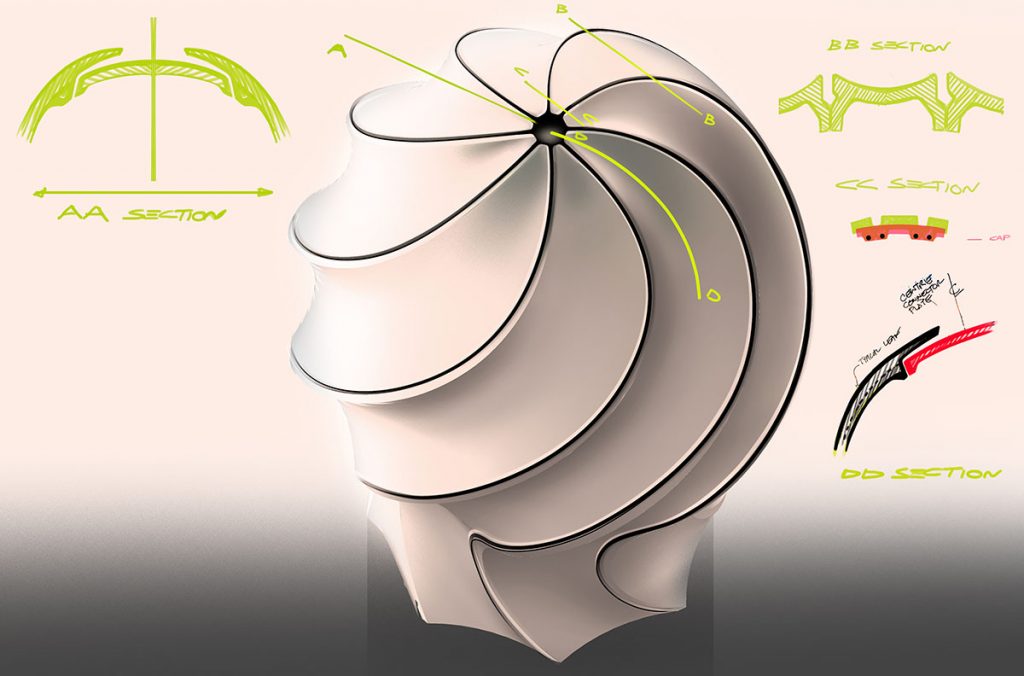
Hollow spiral bronze assembly concept
Above: Three of several stages in the evolution of the First Nations Peace Monument centrepiece design: Alabaster sphere (original concept); Solid tempered glass element (in collaboration with Niagara Falls glassblower Angelo Rossi); Hollow spiral bronze assembly (also rendered on a 3D printer, with individual cast bronze leaves brazed together).
Consistent with a lifetime of inspired architectural design and cutting-edge technical innovation, the First Nations Peace Monument continues Douglas Cardinal’s tradition of drawing inspiration from the organic forms of the natural world and using technology to translate them into distinctive architectural and sculptural forms of singular beauty.
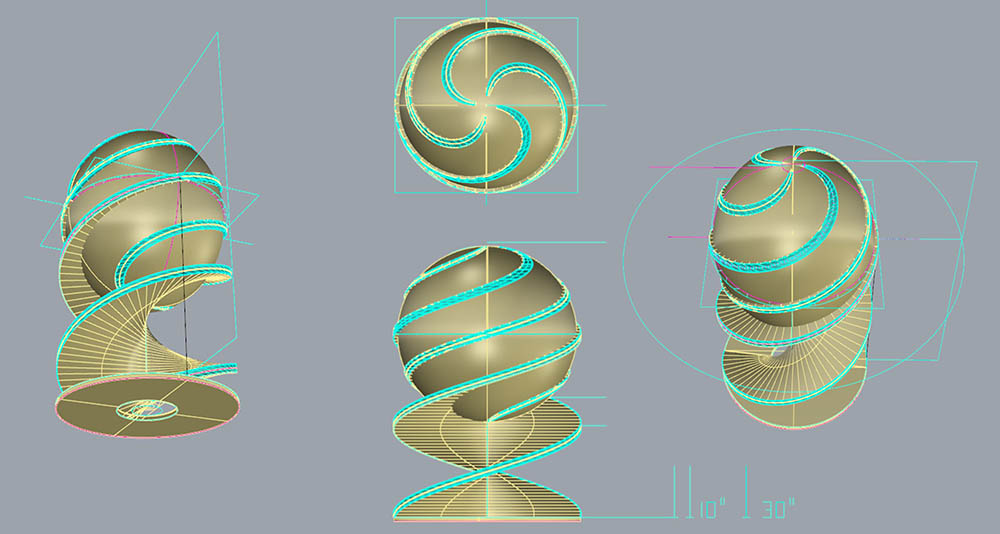
The initial conceptual sketches for the Sunflame sculpture were first translated into computer drawings, then rendered as 3D shapefiles which were manipulated to refine and perfect the sculptural vision.
Next, the final shapefile was used to generate a life-sized model of the work on a 3D additive-synthesis printer using low-temperature polymer resin.
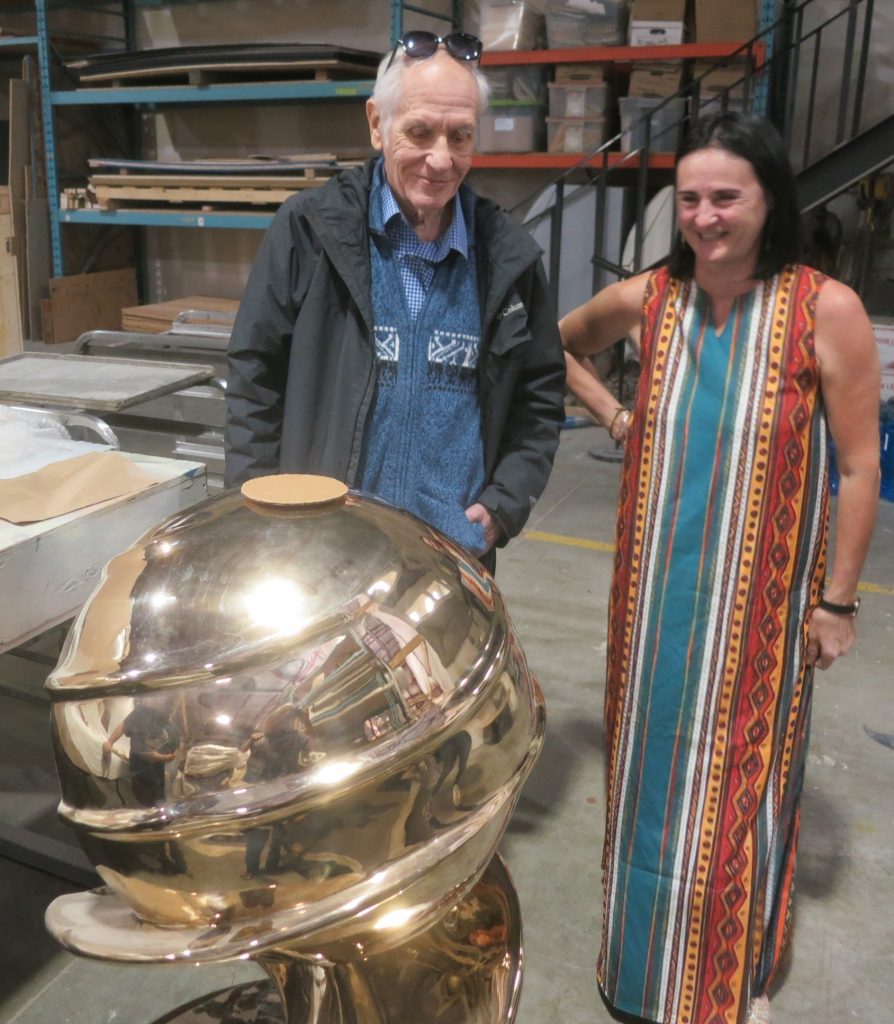
The sculptural craftsmanship of antiquity converged with modern technology when the polymer master was encased in a rigid casting matrix, faithfully capturing its complex curvilinear form. Prior to this, a treelike structure of sprues was added to the polymer model, providing carefully designed pathways for molten bronze to enter the mold and for air to escape.
A fusion of new technology and ancient techniques
Faithfully emulating the 6500-year-old techniques of the Lost Wax casting process, the prepared polymer model was first coated with several layers of a ceramic slurry. It was then encapsulated in a supportive ceramic matrix and dried before being placed in a kiln which hardened the slurry and caused the polymer resin to melt and flow out, forming a negative void that exactly replicated the shape of the sculpture. This casting mold was encased in sand and re-heated to more than 950° C to remove all moisture, before being filled with liquid bronze poured from a crucible. After the sprues and mold marks were removed, the surface of the final bronze casting was polished to a mirrorlike finish and plated with a corrosion-resistant metallic layer to retain its golden brilliance.
Symbolically transcending scales from the domestic to the cosmic, Sunflame simultaneously evokes the nurturing warmth and glow of hearthfires at the heart of Indigenous longhouses, and the life-giving energy of the sun, which is the ultimate source of light and life on earth. The spiral that embraces the golden sphere symbolically connects the sun’s distant celestial orbit to the ground at our feet, a reminder that every place on our planet and every life on earth is connected to the cosmos and dependent upon its awesome yet benevolent energy.The original wampum promises of peace, respect, and cooperation amongst settlers and Indigenous peoples are reproduced in stone on the curved limestone walls of the First Nations Peace Monument, embracing the Sunflame sculpture as the literal and symbolic centerpiece of the monument, merging our earthly lives with their celestial life-giving forces.
- Read A Monumental Story
- Visit the First Nations Peace Monument using the GuideTags digital interpretive app (download here)
- The First Nations Peace Monument is part of the Niagara Indigenous Heritage Trail
